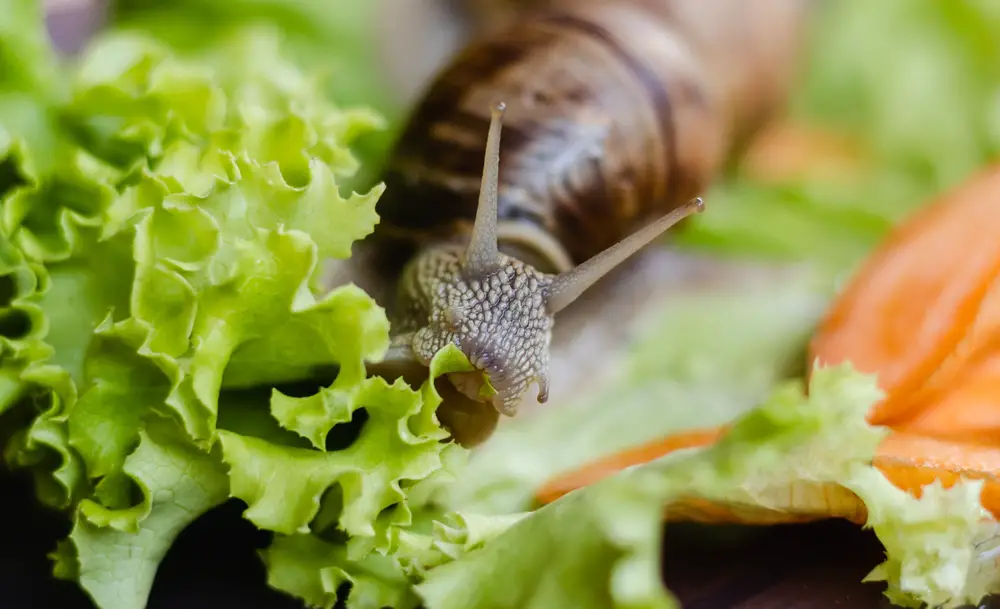What snails eat really depends on the species and habitat they live in. Snails live all across the world and they have a wide range within their diet. They are able to survive in many different environments because of their special anatomical features. One of the main digestive features of the snail is called the radula. This is a specialized mouthpart that includes thousands of teeth all over their tongue and jaw.
Throughout their lifetime snails will continuously lose and replace over 25,000 teeth. This evolutionary trait is similar to that of a shark. Snails are fascinating creatures with unique anatomical features that help them thrive in several habitats.
If you’re interested in learning more about these little creatures, check out my other comprehensive article on everything you need to know about snails. It includes information on their lifecycle, and habitats and explores cool species that live in both terrestrial and aquatic environments!
In this article, I’ll take you through the different snails’ diets, what snails eat, a snail’s impact in the garden, organic snail control methods, and the best ways to prevent snails from damaging garden plants.
Snail Diet Overview
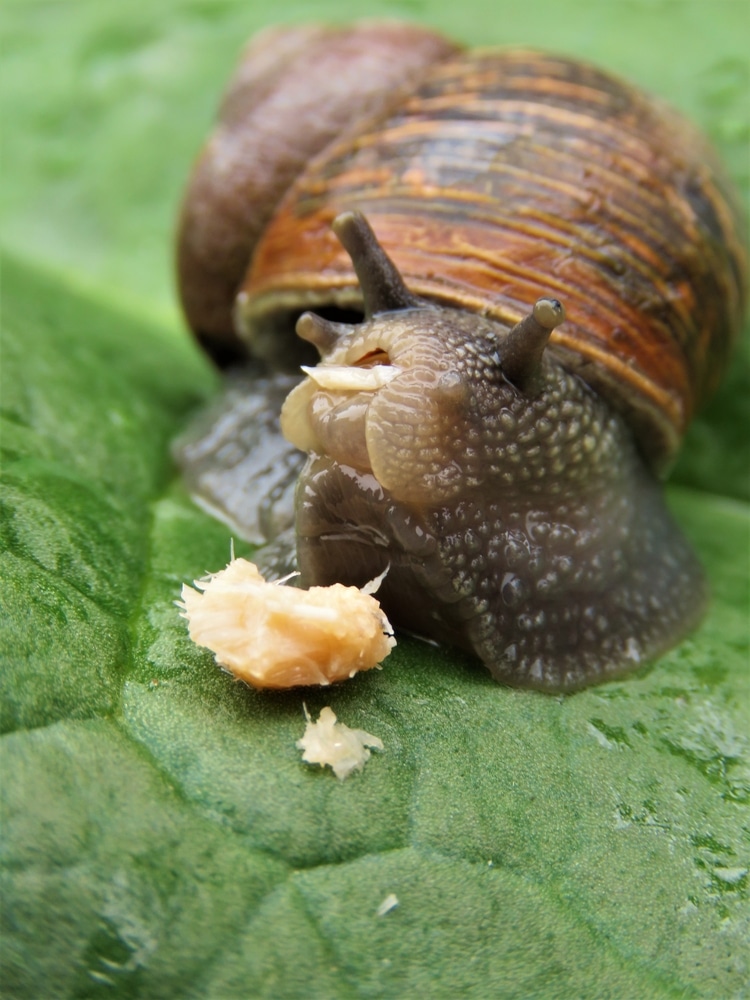
A Snail’s Primary Diet
What do snails eat? When it comes to a snail’s feeding habits, it is dependent on the species of snail and the habitat they reside in. Most terrestrial snails are considered herbivores. This means they only eat plant matter. There is a large variety of different species of snails and a wide range of diets between them. Some snails are omnivores, some are herbivores, while others are carnivores.
Some species have specific snail diets but generally, snails are generalist eaters. This means they enjoy a wide range of food. Snails can eat 10% of their body weight in one day. They can even outgrow their shells if they overeat!
Specific Dietary Preferences
To take a deeper look into each dietary group of what a snail’s primary food preferences is, we will look at three different types of snails with three different types of diets.
Snails As Herbivores
The Brown-Lipped snail is an easily identifiable snail found in backyard gardens. With its bright shell with distinct stripes, the snail is one of the more colorful and ornate species of backyard snail. This snail is not considered a pest, as it prefers to eat decaying plant matter or rotting fruit over fresh new growth. Some other food preferences that the brown-lipped snail has are moss and lichen, bark and fungi.
Snails as Omnivores
The Common Garden snail is a species of snail that has an omnivorous diet. This snail is found most often in backyards and gardens. This snail has had negative impacts on the agricultural industry. Their diet includes plant matter, moss, lichen, rotting, decaying materials, bark, fungi and fruits. This snail loves garden veggies and tender new growth.
This species of snail is also known to eat small insects, worms and decaying animal matter.
Snails as Carnivores
The Rosy Wolf snail is a carnivorous snail that eats slugs and other snails, even gaining the term cannibalistic snail, as it will eat other snails of the same species. This snail has been detrimental to other snail species, as it is considered invasive and has been wiping out populations of native snails. In Hawaii, it has caused the extinction of many native snail species.
Other insects that carnivore snails eat are small insects, centipedes, and worms.
Snail Habitat And How It Affects Diet Preferences
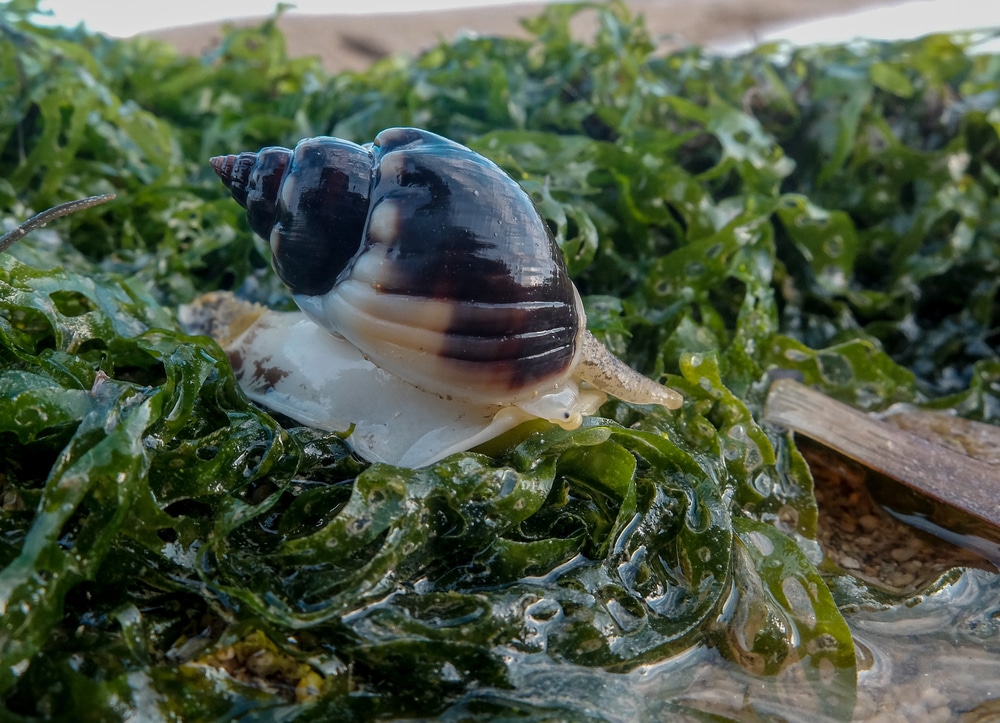
Snails are found worldwide (except Antarctica!). They occupy a wide variety of habitats including:
- Terrestrial environments
- Freshwater
- Saltwater
Where the species of snail lives directly affects what they eat. Let’s explore the differences in diets between terrestrial snails and marine ecosystem snails.
Terrestrial Snails
Terrestrial snails primarily live on land. You can find them in the garden, in forests, fields, deserts, and more. Typically terrestrial snail diet includes:
- Leaves
- Flowers
- Fungai
- Bark
- Lichen
- Fruits
- Veggies
- Grasses
Freshwater Snails
Freshwater snails occupy lakes, rivers, streams, and wetlands. These snails typically eat:
- Algae
- Aquatic plants- submerged and floating.
- Decomposing organic matter- plant and animal
Marine Snails
Depending on the species, marine snails eat a variety of food. Some marine snails are herbivores, while others are carnivorous or omnivores. You can find these varieties of snails in brackish water and oceans. These types of snails typically eat:
- Algae
- Aquatic plants
- Fish
- Other snails
- Dead organisms
Snail Diet In The Garden
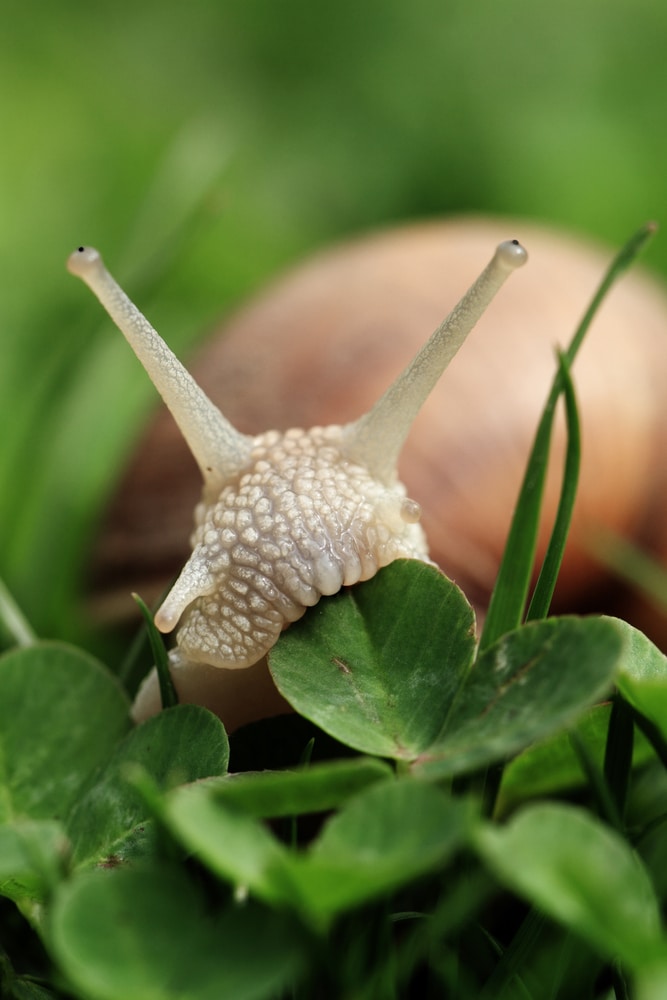
Garden Plants That Snails Prefer
A snail’s diet in the garden is a love for tender leafy greens, young shoots, and roots of newly emerging seedlings has given them the title of garden pest. Though they are an important part of the ecosystem, in large numbers, they can have a negative effect on your garden plants. Snails have a larger impact on the spring- early summer when newly transplanted seedlings are left to fend for themselves in the garden.
Plants Snails like
Here is a list of a snails food source from the garden:
- Succulents
- Leafy crops like:
- Lettuce
- Chard
- Cabbage
- Spinach
- Veggies like:
- Peas
- Cucumber
- Pumpkin
- Melons
- Celery
- Zucchini
- Sunflower seedlings
Impact On Gardens
Snails play an important role in nutrient recycling. This means that they positively aid in the decomposition process. They increase decomposition by a third, helping to biodegrade and break down plant material.
They also play a large role in the nitrification of soils. This means they help to break down nitrogen compounds. Plants need nitrogen to grow, so by breaking down the compounds, snails make nitrogen easier to be absorbed by the plants. In other words, they help plants thrive! The snail’s aid in the nitrification cycle works in both terrestrial and aquatic environments.
Managing Snail Infestations

Even though snails play an important role within their environment, they can be considered pests in the garden and in the agricultural industry. Because the majority of terrestrial snails are herbivores, in large populations they can have a negative impact on the growth success of your plants. Snails have a negative impact on crops as they can eat up to 40% of their weight in one day.
Tips For Gardeners On Managing Snails And Protecting Plants
How to get rid of snails or discourage them from the plants in your garden is a question asked by a lot of gardeners. Below we go into preventative measures as well as control strategies you can employ if snail populations are negatively affecting the plants in your garden.
Preventive Measures
Snails have soft bodies and are sensitive to sharp edges. Using rough materials in your garden can deter snails. Here are a few effective snail deterrents for gardeners that work well to prevent snail infestations:
- Mulch: Cover your garden with wood chips to help deter them
- Eggshells: Sprinkle eggshells around the base of your plants. The snails don’t like the sharp edges of eggshells so they won’t cross the eggshell barrier
- Sheep Wool: This is an organic and sustainable method that also acts as a mulch. Snails and slugs avoid wool as they don’t like the feeling of it on their soft bodies
- Diatomaceous Earth: Note this material kills snails and slugs, so do your own research before using this preventive method. Diatomaceous earth is a fine powder with sharp microscopic edges. This material will cut snails, causing them to dehydrate and die. It is important to wear gloves when using diatomaceous earth
Control Strategies
If you are constantly facing snail and slug infestations, using a biological mitigation technique and control method is an easy way to remove snails from your property.
One of the best ways to remove snails and slugs is to add ducks to your property. They have a hankering for a snail snack and are excellent foragers. The incorporation of waterfowl to your property may be the most sustainable and regenerative option for snail population control!
Another way of controlling our snail and slug populations are beer traps. Note: this method kills snails and slugs, so do your own research before using this preventive method. Pour beer into a margarine container and sink into the ground in different areas of the garden. Snails love beer and are attracted to the trap, they enter the beer pool and drown.
Impact On Agriculture

Snails can have a detrimental and negative effect on the agricultural industry in several ways if populations are not kept in check. Here are some of the ways snails impact agriculture.
Economic And Environmental Impact
Plant Damage
Slug eat all types of plants, which can stunt their growth, stress plants, and even lead to death. This, in turn, impacts the agriculture industry’s economic output.
Impact On Yield
When plants are damaged and dying, yield decreases considerably. Consequently, this affects the economy and food security in the agriculture industry.
Invasive Species
The invasive species known as the giant African land snail eats over 500 different types of plants. This snail does the most damage to agricultural crops. This species can also carry a parasite known as rat lungworm. This parasite can be contracted by humans and causes meningitis.
Snails Are Unique Creatures
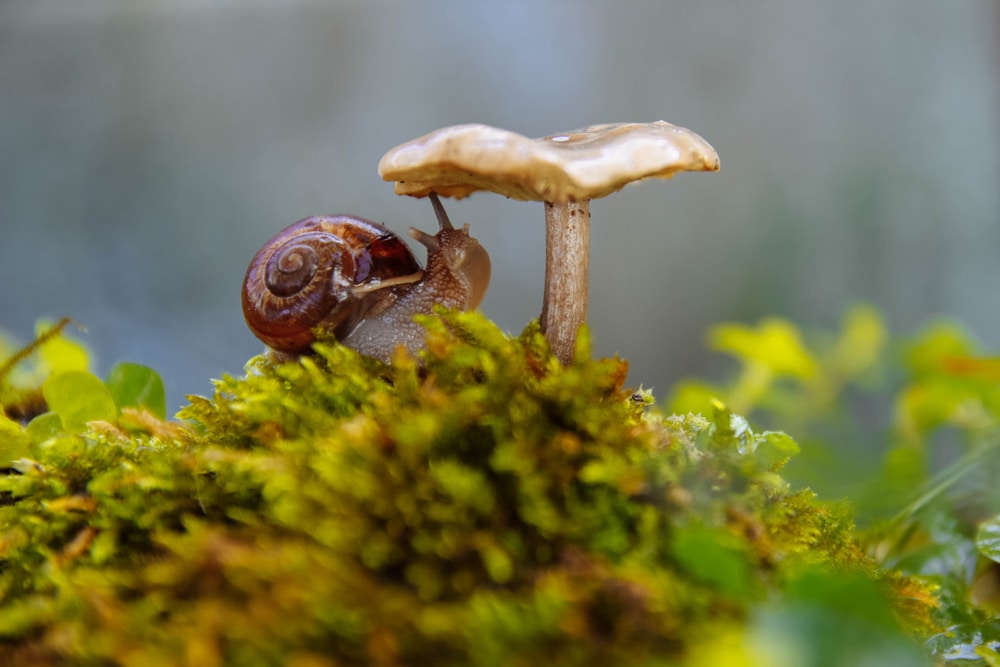
Snails are unique creatures with a wide range of habitats and diets. They play an important role in their ecosystems and should be respected in the garden. If population infestation occurs, organic, regenerative methods are always the best option. Get curious about these creatures and understand their importance on the planet!

